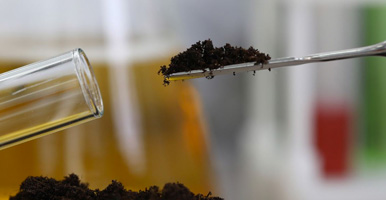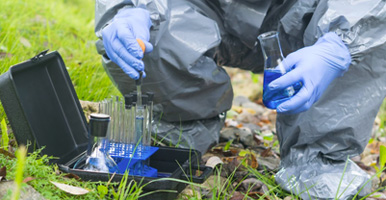Changes to the national regulation on welding fumes has seen a rush of regional NSW businesses seeking professional help to meet the new standard.
In January this year, all State and Territory Work Health and Safety Ministers agreed to an immediate reduction to the Workplace Exposure Standard (WES) for welding fumes to protect workers.
Now, workers in industries such as construction, manufacturing and mining, must not be exposed to levels of welding fumes greater than 1 mg/m3 over an eight-hour working day, based on a five-day working week.
Juliet Duffy, the Managing Director of regionally based hazardous materials and environmental management consultancy, EnviroScience Solutions, says their phone has been running hot with requests from businesses asking for help in complying with the new reduced Exposure Stanadard for welding fumes (not otherwise classified) WES.
“This change to the WES means the level of exposure to welding fumes has been reduced fivefold, from 5 mg/m3 to 1 mg/m3” she said.
“Businesses are scrambling to implement the necessary controls to ensure that their operations meet the new criteria and therefore reduce the risk of exposure from welding fumes.
“Within the industry, comparisons are already being made to the tightening regulations on the cutting, drilling, polishing and grinding of materials containing crystalline silica which as we all know, triggered widespread and rapid reform across the country.”
Under Work Health and Safety laws, business owners must eliminate or minimise the risk to workers as much as reasonably possible.
“The EnviroScience team is carrying out air monitoring for businesses to confirm which components are being produced from welding at their premise and whether the relevant WES is exceeding the new limit,” Juliet Duffy said.
“We’re also assessing existing ventilation systems, ensuring that HVAC systems (heating, ventilation, and air conditioning), air ducts, and air filters are performing at their best.
“EnviroScience is reminding businesses that it’s their obligation to make sure welders are using up-to-date and effective personal protective equipment to prevent them inhaling potentially dangerous fumes – that can be done through one of our respirator fit testing sessions.”
Welding fumes are a complex mixture of hazardous chemicals, and can include iron, silicon, aluminium, chromium, nickel, zinc, titanium and lead.
EnviroScience Solutions has offices in Dubbo, Tamworth, Wagga Wagga, Orange and Newcastle.
For more information on how EnviroScience can help your business meet the new WES for welding, or other services related to contaminants and hazardous substances in the water, air and materials, visit enviroscience.com.au
Media enquiries:
Lauren Harte
Account Director
Seftons









